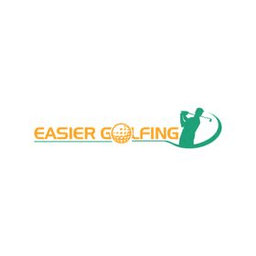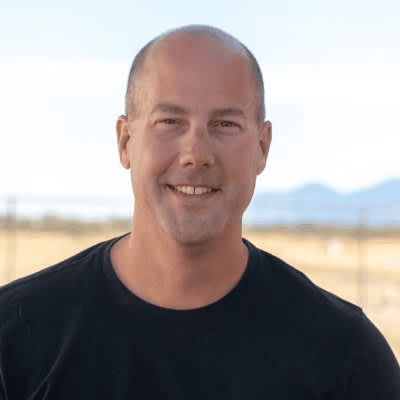How Josey Orr Bought and Merged Two Golf Businesses for $351,000 and Increased Profits


Business Description
Table of Contents
Navigate through the case study sections
Executive Summary
Case Study Content
Building an E-Commerce Powerhouse: Josey Orr's Merged Golf Businesses
Some business stories start with an idea scratched out in a notebook. Josey Orr’s didn’t. Skipping college and traditional jobs, Josey made a decision early on: bet on himself and take real control of his financial future. Structure and workplaces never quite fit, so he frequently scanned Flippa’s marketplace, studying business models and watching which digital assets people wanted most. After years of browsing, he made the pivot from builder to buyer, deciding this time to skip the years of startup grind and acquire running businesses instead.
The Search for the Right Opportunity
Josey had a clear vision: digital info products that could sell over and over, a scalable business model with high margins, and a loyal audience. That's how he spotted Body for Golf, a top performer on Clickbank built by someone just as passionate about golf as he was. With an 8,000+ strong email list and mostly affiliate-driven sales, it ticked every box for Josey, a true business with solid bones and upside.
He jumped quickly into Flippa’s deal room chats, guided by Flippa’s account manager Maliha. The seller, an experienced online golf marketer, wanted her creation in hands that wouldn’t neglect it. Josey’s genuine golf background sealed the deal, reassuring her the business was going to someone who’d care. That focus on alignment and communication mattered just as much as numbers in closing.
Doubling Down: Acquiring Easier Golfing
Right as the Body for Golf deal took shape, Josey found another Flippa listing: Easier Golfing. This brand offered a physical golf product, plus its own subscriber list and newsletter. Initially, he planned only to buy one asset, but after lengthy conversations with both sellers, he realized merging the two would multiply the potential, digital info products from Body for Golf, physical products from Easier Golfing, and two sets of engaged customers. He spent $250,000 to buy Body for Golf, $101,000 on Easier Golfing, and paid close attention to due diligence throughout, verifying numbers, traffic, and operational details with a buyer’s rigor that took emotion out of the decision.
The Integration: Streamlining for Profits
Josey merged the brands, using Easier Golfing as an umbrella company. Both businesses ran lean, but his first act as owner was to restructure shipping contracts, immediately cutting costs and freeing up nearly 10% more profits. For Body for Golf, existing affiliates and the targeted email list drove digital sales with little day-to-day work, a key differentiator for digital products. Easier Golfing’s physical products were enhanced with cross-selling of Body for Golf info products, using the combined newsletter and email lists to double the reach. Optimization like this isn’t just “growth hacking”, it’s old-fashioned operational tuning, and it gets results.
Diligence and Transition
He didn’t rush. Due diligence meant digging into finances, organic vs. paid traffic, the performance of newsletters, open/click rates, and historic pricing. Both sellers stayed on for 90 days, helping smooth the transfer and answering plenty of questions. Josey focused sharply on uncovering missed opportunities, channels left untapped, quick-win tactics, or inefficient processes. The goal was clear: keep sales steady and nudge profit margins higher, laying a foundation for the next wave of sales come fall and holiday seasons.
Entrepreneurial Advice from the Trenches
After successfully integrating and running the combined golf business, Josey says acquiring an existing asset is often easier than building from scratch, especially with some real operating experience under your belt. Mistakes, he says, are best made early, so you can buy smarter later on. Long-term, he thinks in terms of cash flow: as long as the asset throws off healthy cash, he’s happy to hold. When growth slows or the work-to-reward ratio changes, he might sell, though for now, he’s focused on squeezing every bit of profit out of operations and prepping for strong seasonal swings in the golf industry.
Results and Outlook
The transition proved smoother than expected, thanks to attentive sellers, open lines of communication, and an audience of loyal, passionate golfers. Margins got a lift, operational headaches shrank, and a double-barreled email marketing engine kept sales going. Josey’s story shows the power of buying thoughtfully, leaning into existing passion, and ruthlessly prioritizing profit over vanity metrics.
He’s prepping for what he hopes will be a robust fall/winter golf season, still based in Philadelphia, now with a growing family. When asked what he’d say to other solo-preneurs? Buy smart, trust your instincts, always verify, and don’t be scared to lean in hard when the right opportunity comes up. For digital-first e-commerce, doubling down on email, customer trust, and cost controls beat chasing viral hacks any day.
- Start by focusing on businesses that have established digital assets and loyal, niche audiences.
- Take your time with seller relations, it’s often the “human” part that wins the deal, not just the money.
- Due diligence isn’t optional: verify all claims, ask awkward questions, and look for hidden upside.
- After acquisition, get ruthless about cutting costs and tuning profits before worrying about top-line growth.
- If two assets have customer overlap, consider merging to unlock scale and cross-sell potential.
- Plan transition support with sellers; knowledge transfer matters as much as contracts.
Conclusion
Josey Orr’s journey is proof that new business owners don’t always have to start from scratch. With the right vision, sharp analysis, and authentic passion, buying, merging, and optimizing small e-commerce businesses offers a fast path to profitability. As e-commerce matures and micro-businesses look for exits, smart solo operators willing to do the work can build something strong, sometimes by simply buying what works and making it better.
Key Takeaways
- 1Acquiring established businesses can offer a faster, less risky path to profitability than starting from zero, especially for digital products.
- 2Strong seller relationships, including empathy and shared passions, are critical when closing deals on small businesses.
- 3Thorough due diligence, especially around financials, customer lists, and traffic sources, uncovers both red flags and quick wins.
- 4Merging complementary product lines and audiences enables cross-selling and cost-saving opportunities.
- 5Early post-acquisition focus should be on operational optimization: cutting unnecessary costs, refining logistics, and growing margins.
- 6Seller-led transition support (90 days in this case) ensures smoother knowledge transfer and a safer learning curve.
Tools & Technologies Used
Premium Content Locked
Subscribe to access the tools and technologies used in this case study.
Unlock NowHow to Replicate This Success
Premium Content Locked
Subscribe to access the step-by-step replication guide for this case study.
Unlock NowInterested in Being Featured?
Share your success story with our community of entrepreneurs.
Explore More Case Studies
Discover other inspiring business success stories

From IT Burnout to Blog Exit: How Steve Adcock Sold Think Save Retire for Six Figures
Steve Adcock, after 14 years in IT, started Think Save Retire to document his path to financial independence, never expe...
Think Save Retire

From College Savings to $155K Exit: How Alvaro Built and Sold 'Increasingly'
Alvaro, a Peruvian entrepreneur, transformed his college fund into a successful online marketing agency and overcame lan...
Increasingly

How JustBeepIt Skyrocketed to $35,000 with Organic Traffic
JustBeepIt launched with zero marketing spend and climbed to $35,000 in sales by harnessing free channels: Product Hunt,...
JustBeepIt
